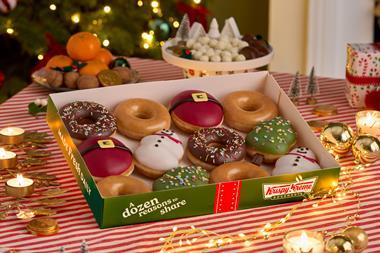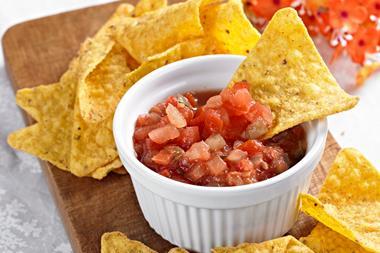More closures are looming, but a new report from IGD shows the independent sector remains pretty resilient, as Rachel Barnes reports
There are chinks of light ahead for the independent convenience sector as the rate of yearly store closures appears to be bottoming out, according to this year’s IGD Convenience Retailing Report, which says the days when literally thousands of small, non-affiliated retailers were shutting up shop each year are coming to an end.
IGD forecasts that about 600 non-affiliated independents will leave the sector each year between 2005 and 2010. That’s not great news, but the figure is in stark contrast to the 6,000 stores that disappeared from this part of convenience in the past two years.
Some of those have not quit retailing, of course, but have instead opted to join a symbol group, whose store numbers were up 430 year on year, and are predicted to rise by about 300 each year up to 2010.
Such migration means the symbol group sector has been going through something of a purple patch. In 2002, symbol groups accounted for 13.3% of stores; today it’s 23.3%. And by 2010, IGD predicts it will be 26.7%. Non-affiliated independents, meanwhile, have seen their share of store numbers slump from more than 60% in 2002 to just over 50% in 2005 - with a decline to 46% forecast for 2010.
James Walton, IGD’s senior economic analyst, says: “This research really makes the case for independents to join a symbol group. If you compare market share with the numbers of stores across the independent and symbol operators, the non-affiliated stores today make up 50% of total stores but 31.2% share of sales.
“While symbol groups hold 23% of stores, their sales also account for 31.2% share of convenience. Symbols are massively overtrading in comparison.”
At the same time, IGD’s research shows that convenience multiples - that’s the likes of Tesco and Sainsbury as well as other operators with more than 10 stores - are also doing very well. There are no separate figures for the stores operated by the supermarkets, but the chains in this segment enjoyed a combined sales growth of almost 18% with just 166 new stores opened.
Over the next five years, these operators are predicted to add 100 stores a year, and by 2010 will account for 13% of total convenience sales (up from 11% today).
The research also shows that the c-store sector as a whole has plenty to be optimistic about. Despite the 2.9% drop in store numbers last year, the value of the sector has grown 4.9% to £23.9bn - outstripping the 4.2% growth experienced by the £119.8bn mainstream grocery market.
IGD says the c-store sector will continue to outperform the overall market with annual growth of between 4.5% and 7% over the next five years. And there’s more good news for non-affiliated independents, whose sales are also predicted to grow - albeit through a smaller store base.
Looking further ahead, IGD says c-store numbers are likely to dip below 50,000 by 2012 (excluding joint ventures) partly because the rate at which specialists convert to a full convenience offer is slowing.
IGD business manager David Gordon says: “In previous years, the convenience sector has benefited from the migration of specialists, such as off-licences, CTNs and forecourts. But the migration is falling, which means that as independents transfer to symbol groups, we’re not seeing the same levels of backfill we once were. Reports have suggested there’s been a resurgence in the high street, so perhaps many specialists are preferring to stay put.”
This has manifested itself in an emergence of chains such as TM Retail and Rippleglen, adds Gordon, with stores that might have previously switched to a convenience format remaining as CTNs.
Meanwhile, fresh and chilled is taking a more central role in convenience.
Fresh food participation has grown from 20.7% in 2003 to 24% in 2004. The strongest growth was seen by the convenience multiples where it was up 7.1 percentage points from 18.5% to 25.6%.
The strength of the supermarkets’ fresh offer, which has been translated into their convenience formats, has driven a change throughout the rest of the market. Symbol groups, for instance, have increased their fresh food offer by 0.1 percentage points to 24.1% while company-managed forecourts have upped their fresh food three percentage points to 19% store participation. But the co-ops, which have the most significant proportion of stores offering fresh produce, saw their contribution slip 1.3 percentage points to 29.2% - as beers, wines and spirits and grocery grew their share.
“We’ve gradually seen an increase in fresh food as a percentage of sales within convenience,” says Walton. “And the signs are it will continue to increase its space as eating habits change. However, canned and frozen foods are still holding their own.”
IGD’s research also highlights the contrary views that exist between suppliers and retailers as to which categories offer the best opportunity in the convenience market. Retailers rated the top three as chilled and fresh; beers, wines and spirits; and snacking, crisps and confectionery. Suppliers took a different view, with their top three being snacks, crisps and confectionery; chilled and fresh; and meal solutions.
But the key message from the research is clear: with symbol groups booming and the remaining non-affiliated retailers proving to be a pretty resilient bunch, the independent sector will continue to prosper.
There are chinks of light ahead for the independent convenience sector as the rate of yearly store closures appears to be bottoming out, according to this year’s IGD Convenience Retailing Report, which says the days when literally thousands of small, non-affiliated retailers were shutting up shop each year are coming to an end.
IGD forecasts that about 600 non-affiliated independents will leave the sector each year between 2005 and 2010. That’s not great news, but the figure is in stark contrast to the 6,000 stores that disappeared from this part of convenience in the past two years.
Some of those have not quit retailing, of course, but have instead opted to join a symbol group, whose store numbers were up 430 year on year, and are predicted to rise by about 300 each year up to 2010.
Such migration means the symbol group sector has been going through something of a purple patch. In 2002, symbol groups accounted for 13.3% of stores; today it’s 23.3%. And by 2010, IGD predicts it will be 26.7%. Non-affiliated independents, meanwhile, have seen their share of store numbers slump from more than 60% in 2002 to just over 50% in 2005 - with a decline to 46% forecast for 2010.
James Walton, IGD’s senior economic analyst, says: “This research really makes the case for independents to join a symbol group. If you compare market share with the numbers of stores across the independent and symbol operators, the non-affiliated stores today make up 50% of total stores but 31.2% share of sales.
“While symbol groups hold 23% of stores, their sales also account for 31.2% share of convenience. Symbols are massively overtrading in comparison.”
At the same time, IGD’s research shows that convenience multiples - that’s the likes of Tesco and Sainsbury as well as other operators with more than 10 stores - are also doing very well. There are no separate figures for the stores operated by the supermarkets, but the chains in this segment enjoyed a combined sales growth of almost 18% with just 166 new stores opened.
Over the next five years, these operators are predicted to add 100 stores a year, and by 2010 will account for 13% of total convenience sales (up from 11% today).
The research also shows that the c-store sector as a whole has plenty to be optimistic about. Despite the 2.9% drop in store numbers last year, the value of the sector has grown 4.9% to £23.9bn - outstripping the 4.2% growth experienced by the £119.8bn mainstream grocery market.
IGD says the c-store sector will continue to outperform the overall market with annual growth of between 4.5% and 7% over the next five years. And there’s more good news for non-affiliated independents, whose sales are also predicted to grow - albeit through a smaller store base.
Looking further ahead, IGD says c-store numbers are likely to dip below 50,000 by 2012 (excluding joint ventures) partly because the rate at which specialists convert to a full convenience offer is slowing.
IGD business manager David Gordon says: “In previous years, the convenience sector has benefited from the migration of specialists, such as off-licences, CTNs and forecourts. But the migration is falling, which means that as independents transfer to symbol groups, we’re not seeing the same levels of backfill we once were. Reports have suggested there’s been a resurgence in the high street, so perhaps many specialists are preferring to stay put.”
This has manifested itself in an emergence of chains such as TM Retail and Rippleglen, adds Gordon, with stores that might have previously switched to a convenience format remaining as CTNs.
Meanwhile, fresh and chilled is taking a more central role in convenience.
Fresh food participation has grown from 20.7% in 2003 to 24% in 2004. The strongest growth was seen by the convenience multiples where it was up 7.1 percentage points from 18.5% to 25.6%.
The strength of the supermarkets’ fresh offer, which has been translated into their convenience formats, has driven a change throughout the rest of the market. Symbol groups, for instance, have increased their fresh food offer by 0.1 percentage points to 24.1% while company-managed forecourts have upped their fresh food three percentage points to 19% store participation. But the co-ops, which have the most significant proportion of stores offering fresh produce, saw their contribution slip 1.3 percentage points to 29.2% - as beers, wines and spirits and grocery grew their share.
“We’ve gradually seen an increase in fresh food as a percentage of sales within convenience,” says Walton. “And the signs are it will continue to increase its space as eating habits change. However, canned and frozen foods are still holding their own.”
IGD’s research also highlights the contrary views that exist between suppliers and retailers as to which categories offer the best opportunity in the convenience market. Retailers rated the top three as chilled and fresh; beers, wines and spirits; and snacking, crisps and confectionery. Suppliers took a different view, with their top three being snacks, crisps and confectionery; chilled and fresh; and meal solutions.
But the key message from the research is clear: with symbol groups booming and the remaining non-affiliated retailers proving to be a pretty resilient bunch, the independent sector will continue to prosper.



















No comments yet